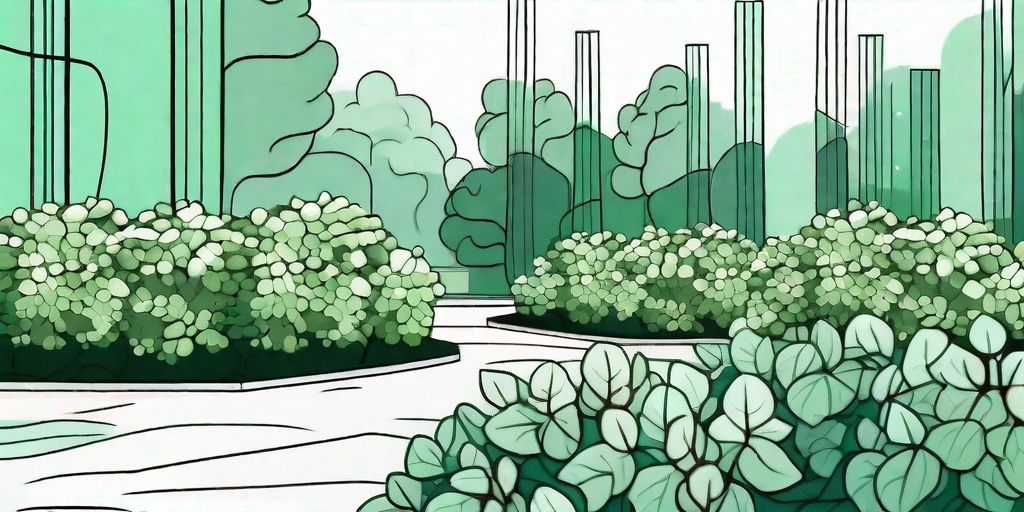
If you're a garden enthusiast, you're probably familiar with the beauty of viburnum. These versatile shrubs are a garden's best friend, offering year-round interest with their lovely foliage, beautiful blooms, and attractive berries. But what happens when those usually vibrant leaves start to turn brown? It's enough to make any green thumb turn pale. But fear not, dear gardeners, for we have the answers to your viburnum woes.
Understanding Viburnum
Before we dive into the nitty-gritty of brown viburnum leaves, let's take a moment to appreciate these hardy plants. Viburnum is a genus of over 150 species of shrubs and small trees that are native to the temperate regions of the Northern Hemisphere. They're loved for their adaptability and their wide variety of shapes, sizes, and colors.
However, even the hardiest of plants can fall victim to disease and pests. In the case of viburnum, one of the most common problems is leaf browning. This can be caused by a variety of factors, from environmental stress to fungal diseases. But don't despair! With a bit of knowledge and some tender loving care, you can restore your viburnum to its former glory.
Identifying the Problem
Environmental Stress
Like humans, plants can also suffer from stress. In the case of viburnum, environmental stress can cause the leaves to turn brown. This can be due to a variety of factors such as extreme temperatures, inadequate water, poor soil conditions, or too much or too little sunlight.
So, how do you know if your viburnum is stressed out? Look for signs like wilting, yellowing, or browning leaves. If you notice these symptoms, it's time to play detective and figure out what's causing the stress. Once you've identified the problem, you can take steps to correct it.
Fungal Diseases
Another common cause of brown viburnum leaves is fungal diseases. These nasty little organisms can wreak havoc on your plants, causing symptoms like leaf spots, wilting, and of course, browning leaves.
The key to dealing with fungal diseases is early detection and treatment. If you notice any unusual spots or discoloration on your viburnum leaves, it's time to take action. Fungicides can be an effective treatment, but prevention is always the best cure.
How to Revive Your Viburnum
Providing the Right Conditions
First things first, you need to make sure your viburnum is getting the right amount of sunlight and water. Most viburnum species prefer full sun to partial shade and well-drained soil. If your plant is not getting these, it's time to make some changes.
Remember, too much of a good thing can be harmful. Overwatering can lead to root rot, while too much sunlight can scorch the leaves. Balance is key when it comes to plant care.
Dealing with Fungal Diseases
If your viburnum is suffering from a fungal disease, it's time to bring out the big guns. Fungicides can be an effective treatment, but they should be used as a last resort. Always try to improve the growing conditions first, as this can often solve the problem without the need for chemicals.
When using fungicides, always follow the manufacturer's instructions. It's also a good idea to remove and dispose of any infected leaves to prevent the disease from spreading.
Preventing Future Problems
As the old saying goes, prevention is better than cure. This is certainly true when it comes to plant care. By providing the right conditions and regularly checking your plants for signs of disease, you can prevent many problems before they start.
Remember, plants are living things and they need care and attention just like we do. So, take the time to get to know your viburnum. Understand its needs and preferences, and you'll be rewarded with a healthy, vibrant plant.
Frequently Asked Questions
Why are my viburnum leaves turning brown?
Brown viburnum leaves can be caused by a variety of factors, including environmental stress, fungal diseases, and pests. It's important to identify the cause of the problem in order to treat it effectively.
How do I treat brown viburnum leaves?
Treatment depends on the cause of the problem. For environmental stress, adjust the growing conditions to suit the needs of the plant. For fungal diseases, fungicides can be an effective treatment. Always remove and dispose of any infected leaves to prevent the disease from spreading.
How do I prevent my viburnum leaves from turning brown?
Prevention is all about providing the right conditions for your viburnum. This includes the right amount of sunlight and water, well-drained soil, and regular checks for signs of disease or pests.
Conclusion
So there you have it, folks. Brown viburnum leaves may be a cause for concern, but with a bit of knowledge and some TLC, you can restore your plant to its former glory. Remember, the key to a lush garden is understanding the needs of your plants and providing the right conditions for them to thrive. So, say goodbye to brown viburnum leaves and hello to a vibrant, healthy garden.















